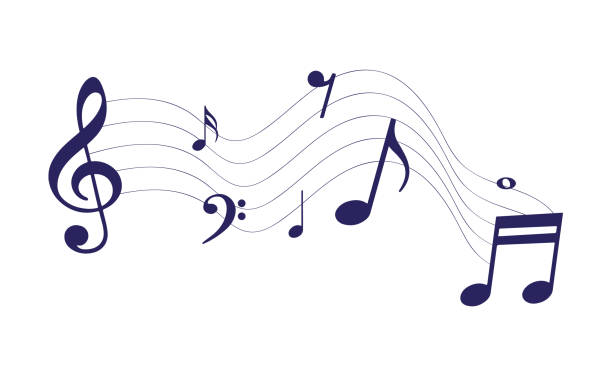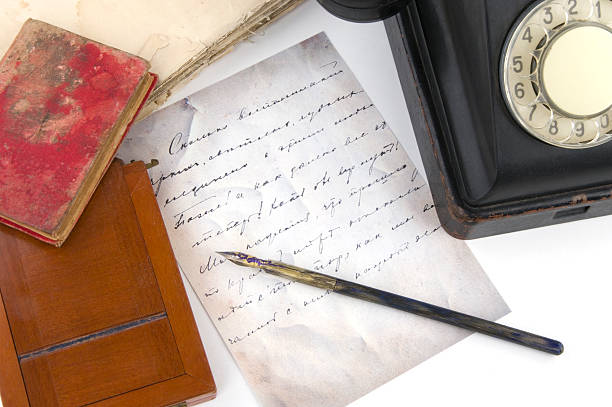How to Show Anger in Writing (10 Best Tips + Examples)
How to Show Anger in Writing
How to Show Anger in Writing: In the vast spectrum of human emotion, anger stands as a formidable force, capable of driving characters to the brink of despair or propelling them into acts of breathtaking courage.
Within the realm of writing, the art of portraying anger is a delicate dance, where every word, every gesture, becomes a brushstroke upon the canvas of emotion. It is a skill that requires finesse, authenticity, and a deep understanding of the human psyche.
How to show anger in writing is not simply a matter of unleashing a torrent of expletives or depicting violent outbursts; rather, it is about capturing the essence of this primal emotion in all its complexity and nuance.
In this guide, we will explore the myriad techniques and strategies that writers can employ to convey anger with depth, resonance, and impact, from crafting vivid imagery and dialogue to structuring conflicts and resolutions.
By delving into the heart of anger and learning how to harness its power, writers can infuse their narratives with an undeniable energy that resonates with readers long after the final page is turned.
How to Show Anger in Writing
Here’s a step-by-step process on How to Show Anger in Writing:
Choose the Right Words
Select strong, vivid language that conveys intensity and frustration. Use powerful adjectives and verbs to accurately depict the emotion.
Describe Physical Reactions
Include descriptions of physical manifestations of anger such as clenched fists, flushed cheeks, or gritted teeth. These details help the reader visualize the emotion.
Express Thoughts and Inner Dialogue
Incorporate inner dialogue or thoughts to reveal the character’s internal turmoil and the reasons behind their anger. This adds depth and understanding to the emotion.
Use Tone and Voice
Adjust the tone and voice of the writing to reflect the character’s anger. Short, sharp sentences or fragmented thoughts can convey a sense of agitation.
Show Behavioral Changes
Illustrate changes in behavior or actions that occur as a result of the anger. This could include pacing, slamming doors, or aggressive gestures.
Include Dialogue
Dialogue can be a powerful tool for showing anger. Use sharp, confrontational language and interruptions to reflect the tension in the interaction.
Avoid Clichés
Steer clear of clichéd expressions of anger and instead opt for fresh, original descriptions that capture the character’s unique voice and perspective.
Provide Context
Contextualize the anger by revealing the events or circumstances that triggered it. This helps the reader understand and empathize with the character’s emotional response.
Show Consequences
Depict the consequences of the character’s anger, whether it leads to conflict, damage to relationships, or other repercussions. This adds realism and depth to the narrative.
Consider Point of View
Adjust the portrayal of anger based on the character’s point of view. First-person narration may offer a more immediate and intense experience of anger, while third-person narration allows for a broader perspective.
By following these steps, writers can effectively convey anger in their writing, creating engaging and authentic portrayals of this powerful emotion.

Understanding Anger
Unlocking the enigma of anger is akin to deciphering a tempestuous storm trapped within the confines of the human soul.
It’s a raw, primal force that surges through our veins, igniting fires of emotion and propelling us into tumultuous waters.
Understanding anger requires delving into the labyrinth of human psychology, where triggers lurk in the shadows and responses dance on the edge of reason. It’s a kaleidoscope of sensation, a symphony of chaos waiting to be conducted.
Yet, amidst the fury, lies profound insight into our deepest fears, insecurities, and unmet needs. Anger is not merely a destructive force; it is a messenger, beckoning us to explore the depths of our being and uncover the truths that lie buried beneath the surface.
Techniques for Conveying Anger
Crafting the perfect portrayal of anger in writing is akin to wielding a masterful brushstroke upon the canvas of emotion. It’s about channeling the molten intensity of fury into words that crackle and sizzle with undeniable power.
From the scorching cadence of dialogue to the searing imagery that brands itself upon the reader’s mind, each technique serves as a conduit for the relentless torrent of emotion.
Like a skilled artisan sculpting from raw clay, writers mold characters with layers of complexity, infusing their anger with nuance and authenticity.
Metaphors become weapons, slashing through the veil of civility to reveal the raw, pulsating core of discontent.
In this symphony of expression, every word is a note, every sentence a crescendo, building towards a climax that leaves the reader breathless and trembling in the wake of such raw, unbridled emotion.
Vivid Imagery and Descriptive Language
Vivid imagery and descriptive language are the lifeblood of storytelling, infusing narratives with color, texture, and depth.
Like a master painter wielding a vibrant palette, writers deftly brush strokes of imagery across the canvas of the reader’s mind, transporting them to realms both familiar and fantastical.
Through carefully chosen words, they conjure landscapes that stretch to the horizon, where azure skies meet emerald seas in a breathtaking dance of light and shadow.
Each sensory detail becomes a thread, weaving a tapestry of sensation that envelops the reader, from the crisp scent of autumn leaves crunching beneath weary feet to the velvety touch of moonlight caressing the skin.
In this symphony of sensation, every metaphor, every simile, is a brushstroke, painting vivid portraits of characters, places, and emotions that linger long after the final page is turned.
Symbolism and Metaphor
Symbolism and metaphor serve as the alchemical keys that unlock hidden chambers of meaning within the labyrinth of literature.
They are the whispered secrets that echo between the lines, inviting readers to unravel the mysteries concealed within the text.
Like a skilled magician, writers weave symbols and metaphors into the fabric of their narratives, imbuing them with layers of significance that transcend the literal.
A single rose may represent love’s tender embrace or the sting of betrayal, while a storm brewing on the horizon heralds impending turmoil or cleansing renewal.
Through these subtle nuances, writers paint with shades of symbolism, inviting readers to explore the rich tapestry of human experience.
In the dance of metaphor, ordinary objects become vessels of profound revelation, illuminating truths that resonate with universal truths.
It is through these shimmering veils of symbol and metaphor that the essence of storytelling is revealed, inviting readers to embark on a journey of discovery through the landscapes of imagination.
Structuring Anger in Writing
Structuring anger in writing is akin to orchestrating a symphony of emotion, each note carefully composed to build tension, crescendo to climax, and ultimately resolve in a cacophony of release. It begins with the subtle rumblings of discontent, planting seeds of unrest that germinate into full-blown conflict.
Like a skilled architect, writers erect the framework of fury, layering bricks of escalating tension until the walls of restraint threaten to crumble.
With each turn of the page, anger surges like a tempest, swirling and eddying in a torrent of raw emotion, until it reaches a zenith of intensity that leaves readers breathless in its wake.
Yet, even amidst the chaos, there lies a delicate balance, a quiet aftermath where the ashes of anger smolder and cool, paving the way for resolution and growth.
In this delicate dance between chaos and order, writers harness the primal power of anger, sculpting narratives that resonate with the raw, unbridled energy of human emotion.

Introduction of Conflict
The introduction of conflict is the pivotal moment where the still waters of narrative tranquility are disrupted by the first ripples of discord.
Like a crack of thunder in a serene sky, it jolts both characters and readers out of complacency, setting the stage for the turbulent journey ahead.
Whether it’s a clash of personalities, a clash of ideals, or a clash with the external forces of the world, conflict serves as the catalyst that propels the story forward.
It ignites the spark of tension, fueling the flames of anticipation as characters grapple with adversity and confront the obstacles that stand in their path.
In this crucible of conflict, alliances are forged, loyalties are tested, and the true nature of characters is laid bare.
It is through the introduction of conflict that the narrative finds its purpose, its direction, and its heart, setting the stage for the transformative journey that lies ahead.
Escalation and Climax
Escalation and climax are the twin peaks of narrative tension, the crescendo towards which every word, every action, every heartbeat inexorably builds.
Like a rollercoaster ascending to its zenith, the tension mounts with each twist and turn, drawing readers ever closer to the edge of their seats. With deft strokes of the pen, writers amplify the stakes, raising the emotional stakes to dizzying heights as conflicts escalate and tensions reach a fever pitch.
The climax emerges as the culmination of this relentless ascent, a moment of catharsis where the forces of conflict collide in a cataclysmic eruption of action and emotion.
It is here, amidst the thunder and lightning of narrative climax, that characters are tested to their limits, and destinies are decided.
In this pivotal moment, readers are held captive, breathless with anticipation, as they witness the ultimate resolution of the story’s central conflict.
Dos and Don’ts of Writing Anger
In the volatile landscape of writing anger, navigating the dos and don’ts is akin to traversing a minefield of emotion, where missteps can detonate with explosive consequences.
The dos beckon like beacons of guidance, urging writers to harness the tempestuous energy of anger with finesse and authenticity.
Do tap into personal experiences, drawing from the wellspring of raw emotion to infuse characters with depth and resonance.
Balance becomes the watchword, as writers deftly interweave anger with other emotions, crafting a nuanced portrayal that reflects the complex tapestry of human experience. Yet, amid the dos, lie the perilous pitfalls of the don’ts, where clichés and stereotypes lurk like hidden traps.
Don’t succumb to the siren song of tired tropes, where anger is reduced to a one-dimensional caricature devoid of authenticity.
And above all, don’t allow anger to overshadow the narrative’s purpose or message, lest it consume the story like a wildfire devouring the forest floor.
In this delicate dance between dos and don’ts, writers find themselves walking a tightrope suspended between brilliance and oblivion, where every word becomes a step forward or a stumble into the abyss.
Revision and Editing Tips
Revision and editing are the alchemical processes through which the rough ore of raw writing is transformed into the gleaming gold of polished prose.
Like a sculptor chiseling away at a block of marble, writers must approach revision with a discerning eye and a willingness to let go of what no longer serves the narrative.
Take breaks, breathe, gain perspective—these are the mantras of the revisionist, for distance lends clarity and objectivity to the creative process.
Seek feedback from trusted allies, for fresh eyes can uncover hidden gems and expose blind spots missed in the heat of creation.
Refinement becomes the name of the game, as writers hone their language, tighten their structure, and elevate their prose to new heights of brilliance.
And remember, revision is not a solitary endeavor but a collaborative dance between writer and editor, each step bringing the manuscript closer to its ultimate destiny—a masterpiece worthy of the ages.
Examples of Anger in Literature
In the grand tapestry of literature, anger is a vibrant thread woven into the very fabric of storytelling, manifesting in a myriad of forms across genres and epochs.
From the thunderous rage of Achilles in Homer’s “Iliad,” whose wrath sets the stage for the epic clash of gods and mortals, to the simmering resentment of Miss Havisham in Dickens’ “Great Expectations,” whose bitter fury becomes a haunting specter haunting the lives of those around her, anger emerges as a dynamic force driving the narrative forward.
In Morrison’s “Beloved,” Sethe’s seething anger at the horrors of slavery becomes a palpable presence, shaping the lives of her family and haunting the very walls of their home.
Even in the fantastical realms of Tolkien’s Middle-earth, the fiery wrath of Sauron serves as a catalyst for conflict, driving the forces of good and evil towards a climactic showdown.
Through these diverse examples, anger emerges not as a mere emotion, but as a potent narrative device, a catalyst for change and transformation that resonates with readers across cultures and generations.

Analyzing excerpts from renowned authors
Analyzing excerpts from renowned authors is akin to embarking on a literary pilgrimage, each passage a sacred relic imbued with the wisdom and insight of its creator.
From the haunting soliloquies of Shakespeare’s Hamlet to the lyrical prose of Toni Morrison’s “Beloved,” these snippets offer glimpses into the minds of literary giants, inviting readers to unravel the mysteries concealed within their words.
Through close reading and critical analysis, we unearth the layers of symbolism, metaphor, and theme that lie beneath the surface, peeling back the veil to reveal the inner workings of the author’s craft.
Each excerpt becomes a microcosm of the larger work, a microcosm teeming with meaning and significance waiting to be unearthed by the diligent reader.
In this journey of exploration, we not only deepen our understanding of literature but also enrich our own creative endeavors, drawing inspiration from the masters who have come before us.
Contemporary examples in various genres
In the kaleidoscope of contemporary literature, anger emerges as a dynamic force across a multitude of genres, each one offering a unique lens through which to explore the complexities of human emotion.
In dystopian fiction, authors like Margaret Atwood and George Orwell channel societal discontent into narratives of rebellion and resistance, where anger becomes a catalyst for revolution against oppressive regimes.
In the realm of crime fiction, authors such as Gillian Flynn and Stieg Larsson infuse their thrillers with simmering rage, driving characters to seek justice in the face of corruption and injustice.
Even in the tender confines of romance novels, authors like Colleen Hoover and Jojo Moyes delve into the depths of human passion, where love and anger intertwine in a tumultuous dance of desire and despair.
Across genres and storytelling mediums, contemporary literature offers a rich tapestry of anger, weaving together narratives that resonate with the complexities of the modern world.
Exercises and Prompts
Exercises and prompts are the creative crucibles in which writers forge their literary prowess, transforming raw ideas into polished gems of storytelling brilliance.
Like a blacksmith’s forge, these exercises temper the creative spirit, honing skills and sharpening instincts through trial and experimentation.
From flash fiction challenges that ignite the imagination in a blaze of inspiration to character-building exercises that breathe life into the most enigmatic of protagonists, each prompt offers a doorway into the boundless realms of creativity.
Whether it’s crafting a story from a single word or exploring the depths of emotion through journaling prompts, these exercises serve as the scaffolding upon which literary masterpieces are built.
Through their guidance, writers embark on a journey of self-discovery, uncovering hidden talents and unearthing untold stories waiting to be told.
In the alchemy of creation, exercises and prompts are the catalysts that transform dreams into reality, sparking the flames of inspiration that burn bright within every writer’s soul.
Frequently Asked Questions (FAQ) about How to Show Anger in Writing
What are some effective ways to convey anger without resorting to clichés or stereotypes?
Showing anger in writing requires a nuanced approach. Instead of relying on tired tropes, try delving into the character’s internal thoughts and physical reactions. Explore unique metaphors and imagery that vividly portray the emotion without relying on overused expressions.
How can I make sure that my portrayal of anger feels authentic and believable to readers?
Authenticity is key when depicting anger in writing. Draw from personal experiences or observe how people express anger in real life. Pay attention to body language, tone of voice, and the subtle nuances of emotion. Incorporating these details will lend credibility to your portrayal.
Is it necessary for characters to express their anger overtly, or can it be conveyed subtly?
Anger can be portrayed in various ways, ranging from explosive outbursts to simmering resentment. Subtle cues such as clenched fists, narrowed eyes, or terse dialogue can be just as effective in conveying anger as more overt displays. Consider the context of the scene and the personality of the character to determine the most appropriate approach.
How can I avoid glorifying or romanticizing anger in my writing?
It’s important to be mindful of the consequences of portraying anger in a positive light. Instead of glorifying anger, focus on depicting its negative impact on relationships, mental health, and personal well-being. Show the repercussions of unchecked anger and explore themes of remorse, forgiveness, and personal growth.
Are there any exercises or prompts I can use to practice portraying anger in my writing?
Absolutely! Try writing scenes from different perspectives, exploring how different characters react to the same triggering event. Experiment with varying levels of intensity and explore the underlying motivations behind the anger. Additionally, you can use writing prompts focused specifically on anger to challenge yourself and hone your skills.
Conclusion
In the intricate tapestry of storytelling, anger emerges as a powerful brushstroke, adding depth, complexity, and intensity to the narrative canvas.
Through the exploration of various techniques, from vivid imagery and dialogue to nuanced characterization and symbolism, writers can master the art of portraying anger in writing.
By delving into the depths of human emotion and drawing from personal experiences, writers can infuse their narratives with authenticity and resonance, captivating readers and eliciting a visceral response.
However, it is essential to wield this potent tool with care, avoiding clichés, stereotypes, and glorification, and instead focusing on portraying anger in all its complexity and nuance.
In conclusion of how to show anger in writing, by harnessing the transformative power of anger, writers can craft stories that resonate deeply with readers, leaving an indelible imprint long after the final page is turned.






